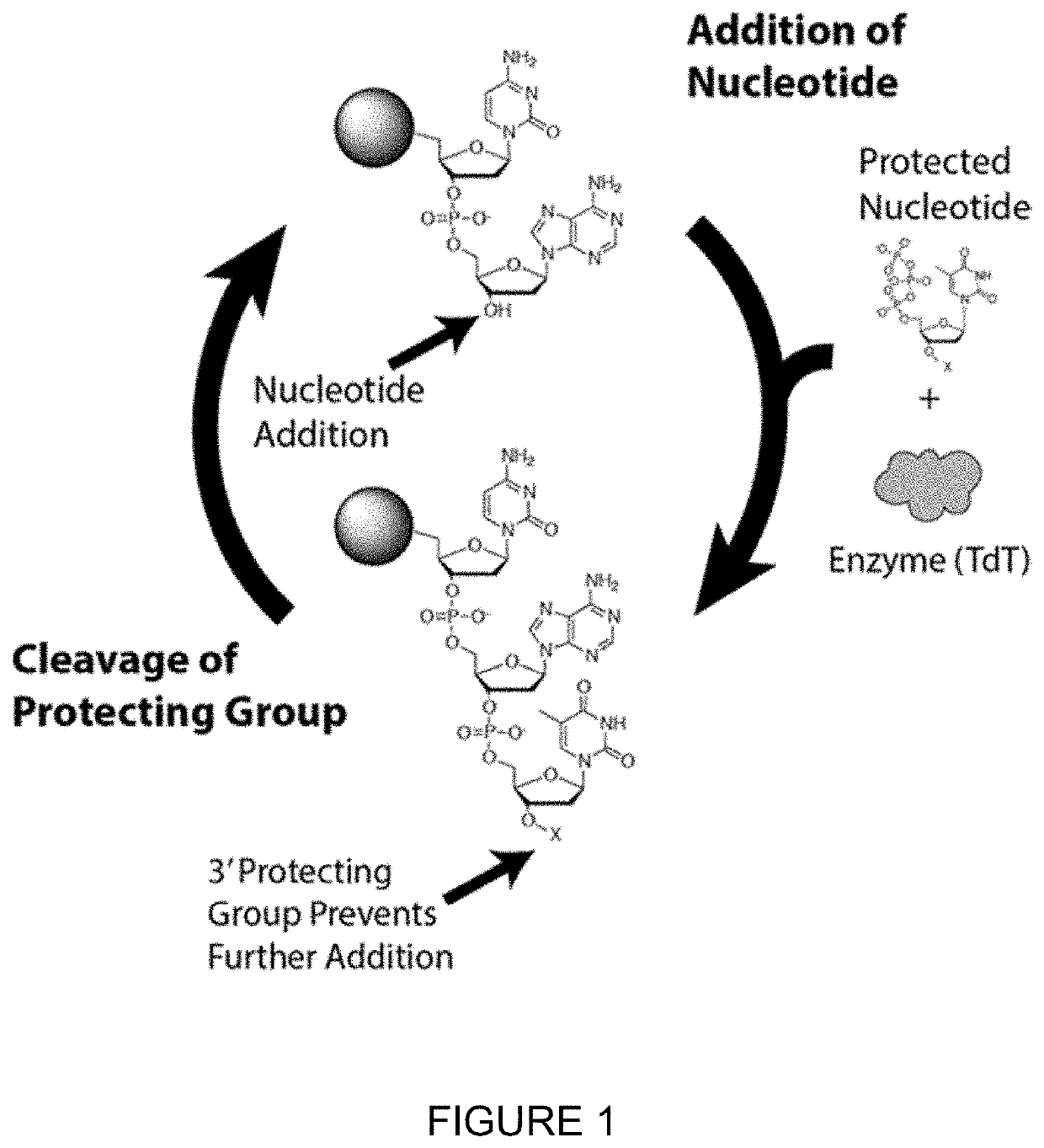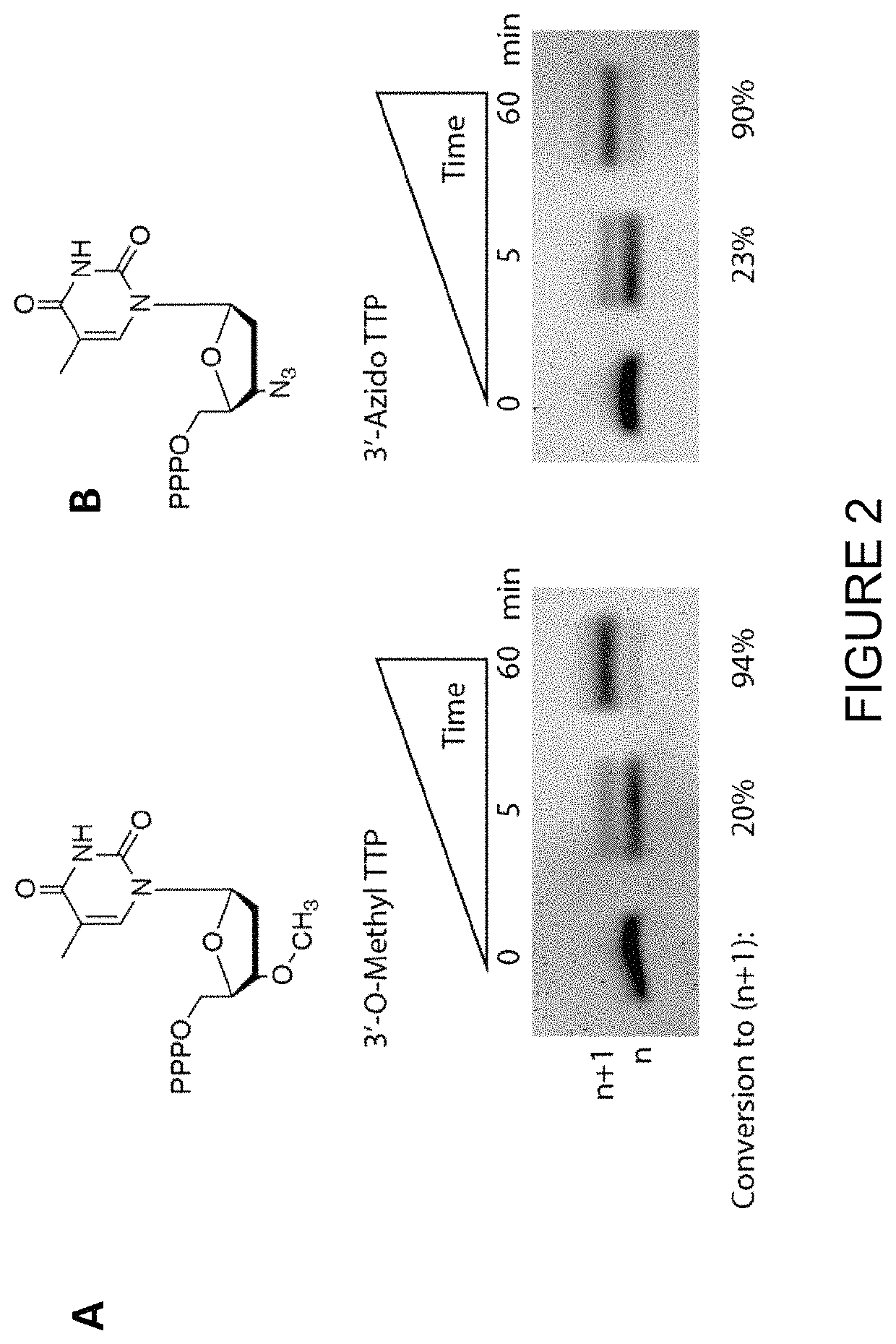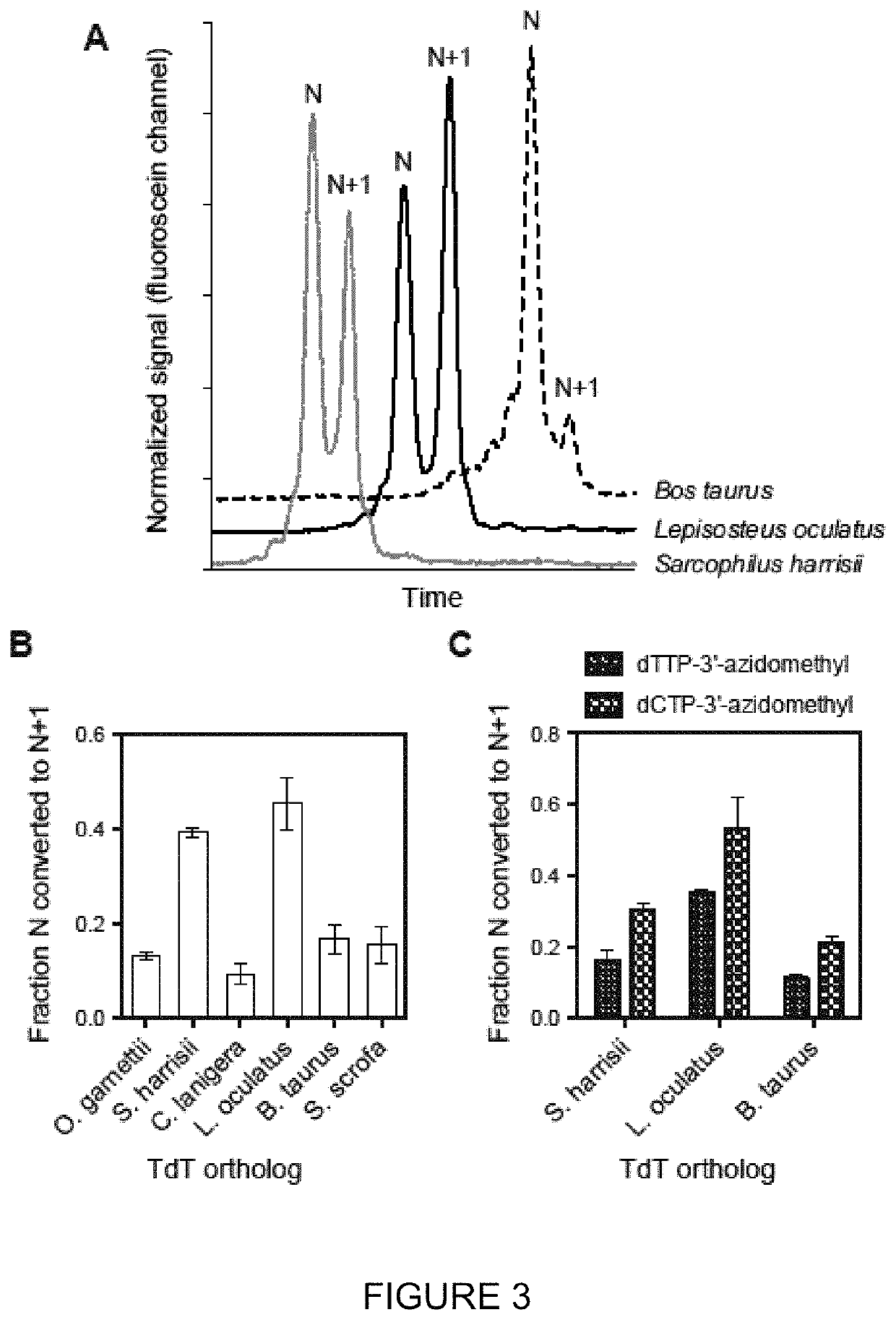Compositions and methods related to nucleic acid synthesis
a nucleic acid and synthesis technology, applied in the field of nucleic acid synthesis, can solve the problems of further growth of artificial intelligence, inability to synthesise dna strands greater than 200 nucleotides in length, and inability to meet the demands of biotechnology industry
- Summary
- Abstract
- Description
- Claims
- Application Information
AI Technical Summary
Problems solved by technology
Method used
Image
Examples
example 3
d TdT Orthologs Demonstrate Improved Function Over Wild-Type Proteins
[0157]A single-stranded DNA initiator (SEQ ID NO: 7) was incubated with either a purified wild-type Lepisosteus oculatus TdT or a purified, recombinant engineered form of Lepisosteus oculatus TdT (SEQ ID NO: 8), required salts, cobalt chloride, Saccharomyces cerevisiae inorganic pyrophosphatase, and 3′-O-azidomethyl dTTP at 37° C. for 20 min.
[0158]The wild-type Lepisosteus oculatus TdT was outperformed by the engineered variant (SEQ ID NO: 8), as demonstrated by improved ability to convert the initiator strand of length n to a strand of length n+1, when supplied with 3′-reversibly blocked dCTP, dGTP or dTTP.
example 4
gineered TdT Orthologs for Template-Independent and Sequence-Specific DNA Synthesis
[0159]A single-stranded DNA initiator (SEQ ID NO: 7) was incubated with a purified, recombinant engineered form of Lepisosteus oculatus TdT, required salts, cobalt chloride, Saccharomyces cerevisiae inorganic pyrophosphatase, and 3′-O-azidomethyl dTTP at 37° C. for 10 min.
[0160]Bos Taurus TdT was outperformed by an engineered variant of Lepisosteus oculatus TdT, as demonstrated by the denaturing PAGE gel in FIG. 5. This example demonstrates an engineered form of Lepisosteus oculatus TdT incorporates 3′-reversibly blocked nucleotides (1) better than the wild-type Lepisosteus oculatus TdT, and (2) much better than Bos Taurus TdT (see FIGS. 2-5).
example 5
organic Pyrophosphatase to Control Nucleic Acid Sequence Specificity
[0161]A single-stranded DNA initiator (SEQ ID NO: 7) was incubated with Bos taurus TdT at 37° C. for 60 min under the reaction buffer shown above with the exception that the concentration of Saccharomyces cerevisiae inorganic pyrophosphatase was varied. When dideoxyTTP (ddTTP) was used, the concentration of the NTP was 0.1 mM. Reactions were analysed by PAGE and are shown in FIG. 6.
[0162]The inorganic pyrophosphatase studies with TdT demonstrate that TdT-mediated DNA synthesis must utilise an inorganic pyrophosphatase in order to control nucleic acid sequence specificity.
PUM
| Property | Measurement | Unit |
|---|---|---|
| temperature | aaaaa | aaaaa |
| pH | aaaaa | aaaaa |
| pH | aaaaa | aaaaa |
Abstract
Description
Claims
Application Information
 Login to View More
Login to View More - R&D
- Intellectual Property
- Life Sciences
- Materials
- Tech Scout
- Unparalleled Data Quality
- Higher Quality Content
- 60% Fewer Hallucinations
Browse by: Latest US Patents, China's latest patents, Technical Efficacy Thesaurus, Application Domain, Technology Topic, Popular Technical Reports.
© 2025 PatSnap. All rights reserved.Legal|Privacy policy|Modern Slavery Act Transparency Statement|Sitemap|About US| Contact US: help@patsnap.com



